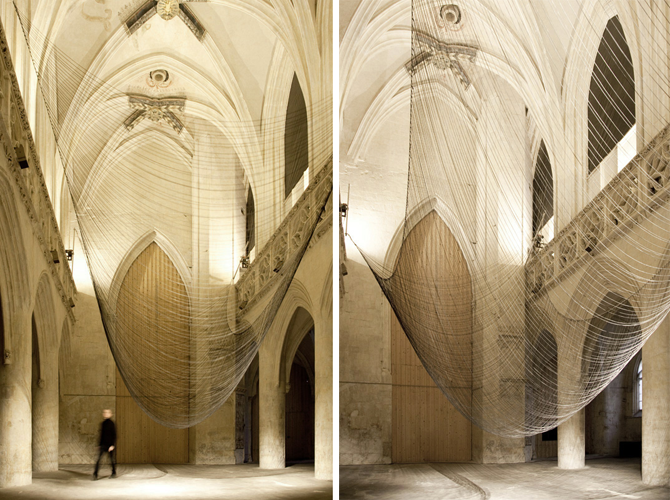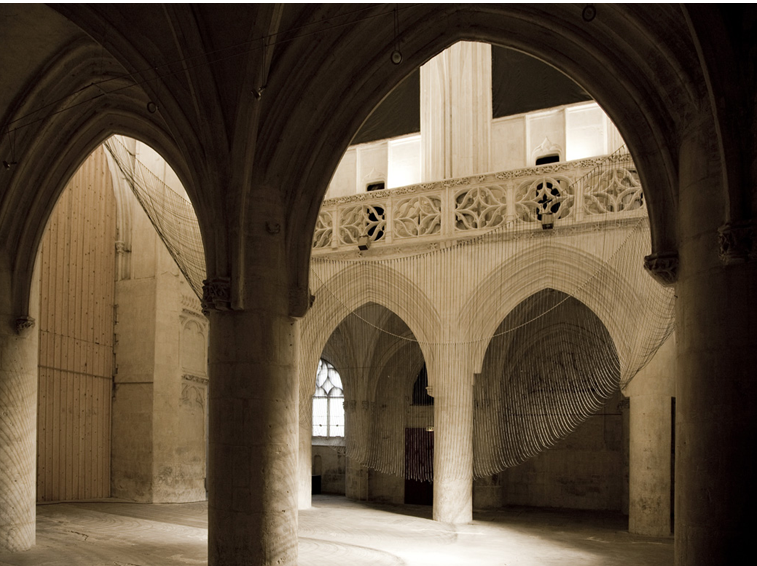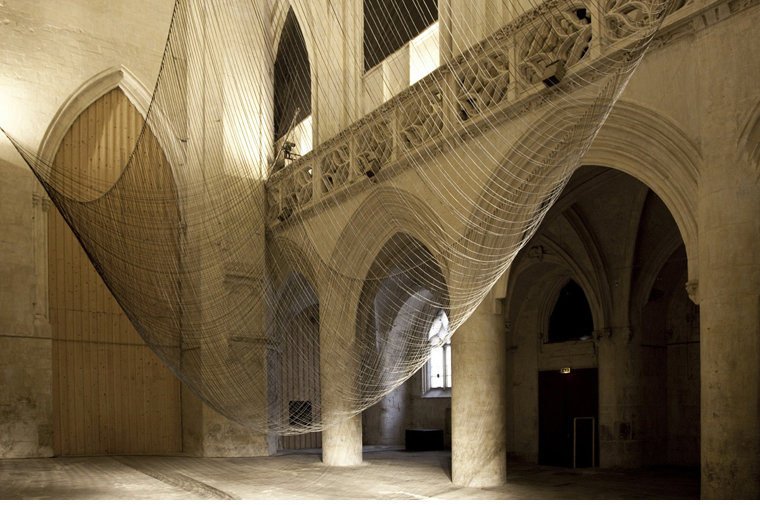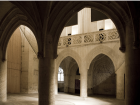Eglise Saint Sauveur . Caen (FR)
Created for the Saint Sauveur chapel in Caen, Caten is a levitating sculpture, determined by gravity and guiding the evolution of a sound composition.
300 fine wires suspended from two ropes, connected themselves at each end to a slowly rotating arm, form an evanescent surface which interacts with the architecture.
By a symbolic mirror effect, the curves of the wires, created by the gravitational force, reflect the shapes of the church arches. Caten opposes the ephemeral to the eternal, the movement to the static, and produce a tension between the lightness and the millenary stability of the space.
The sound composition is inspired by the medieval solmisation prayers, especially the first verse of "Ut Queant Laxis", also known as the "hymn to St John the Baptist", used in the eleventh century to determine the names of the notes of the scale used in latin countries.
At each turn, the engines emit one of the first 4 notes of the scale (Ut, Re, Mi, Fa), creating a sequence of intervals, constantly reconfigured. Low frequencies resonate in the space and emphazise the transcendental character of a place once dedicated to faith.
The name is derived from the term catenary, which describes the plane curve formed by a rope hanging between two points.

French version :
Création originale pour la chapelle du Vieux St Sauveur, Caten est une sculpture en lévitation, déterminée par la gravité et guidant l'évolution d'une composition sonore.
300 fils suspendus à 2 cordes, elles-mêmes reliées aux extrémités à des bras en lente rotation, forment une surface évanescente qui dialogue avec l'architecture.
Par un effet de miroir symbolique, les courbes particulières des fils, créées par la force de gravitation, reflètent la forme des voûtes de l'église. Caten oppose l'éphémère à l´éternel, le mouvement à l'immuable et met en tension la légèreté avec la stabilité millénaire de l'espace.
La composition sonore est inspirée par la solmisation des prières médiévales, et notamment des premiers vers de "Ut Queant Laxis", ou hymne à St Jean-Baptiste, utilisée au XIe siècle pour constituer les noms des notes de la gamme solfégique des pays Latins.
À chaque demi-tour, les moteurs émettent une des 4 premières notes de la gamme (Ut, Re, Mi, Fa), créant ainsi une suite d'intervalles déterminés, mais constamment reconfigurés de manière aléatoire. Les basses fréquences entrent en résonance avec l'espace et réaffirment le caractère transcendantal d'un lieu autrefois consacré.
Le nom Caten est dérivé de caténaire, qui désigne la courbe plane formée par une corde pendue entre 2 points.


CREDITS
Caten was produced for the festival Interstice, with the support of the Station MIR.
www.festival-interstice.net
www.station-mir.com
Exhibition
24.04.2012 > 28.04.2012 : Festival Interstices
Chapelle du Vieux Saint Sauveur . Caen (FR)
www.festival-interstice.net

